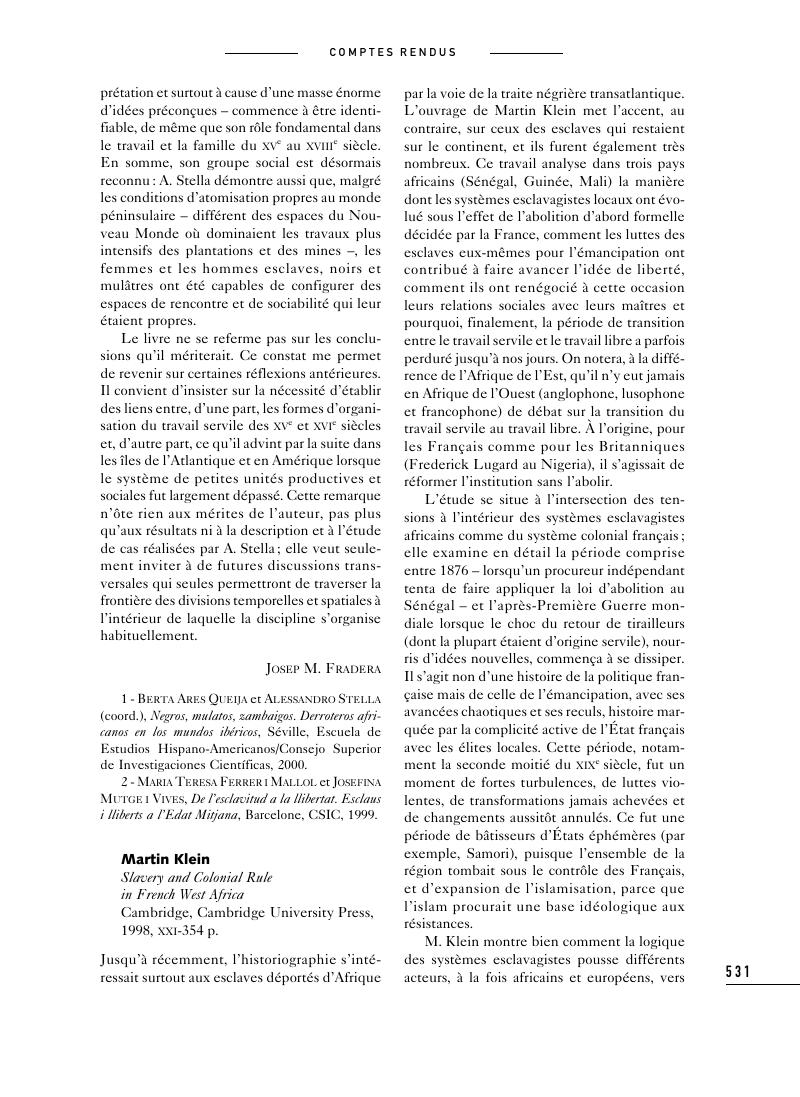No CrossRef data available.
Published online by Cambridge University Press: 04 May 2017

1 Voir Lovejoy, Paul et Hogendorn, Jan, Slow Death for Slavery: The Course of Abolition inNorthern Nigeria, 1897-1936, Cambridge, Cambridge University Press, 1993 CrossRefGoogle Scholar.
2 Les études de Martin Klein sur l’islam en Sénégambie ont eu une influence décisive sur tous les chercheurs de la région, dès sa première publication : Islam and Imperialism: Sine Saloum, 1847-1914, Stanford, Stanford University Press, 1968.
3 Voir Rodney, Walter, « African Slavery and Other Forms of Social Oppression on the Upper Guinea Coast in the Context of the Atlantic Slave Trade », Journal of African History, 7, 1966, pp. 431– 443 CrossRefGoogle Scholar ; et l’une des premières critiques de cette thèse : IVANA ELBL, West Africa and the Portuguese Trade, University of Toronto, Ph. D., 1985.
4 Miers, Suzanne et Kopytoff, Igor (éds), Slavery in Africa: Historical and Anthropological Perspectives, Madison, University of Wisconsin Press, 1977 Google Scholar. Voir également Miers, Suzanne et Roberts, Richard (éds), The End of Slavery in Africa, Madison, University of Wisconsin Press, 1988 Google Scholar ; Klein, Martin et Robertson, Claire C. (éds), Women andSlavery in Africa,Madison, University of Wisconsin Press, 1983 Google Scholar.
5 Meillassoux, Claude, Anthropologie de l’esclavage: le ventre de fer et d’argent, Paris, PUF, 1986, pp. 14–15 Google Scholar. Voir également, ID., L’esclavage en Afriqueprécoloniale, Paris, Maspero, 1975.
6 Sur la pérennité de l’empreinte servile alors même que les conditions socio-économiques qui avaient produit l’esclavage ont progressivement disparu, voir Ruf, Urs Peter, EndingSlavery: Hierarchy,Dependency and Gender in Central Mauritania, Bielefeld, Transcript Verlag, 1999 CrossRefGoogle Scholar ; Botte, Roger (éd.), L’ombre portée de l’esclavage. Avatars contemporainsde l’oppression sociale , Journal des africanistes, 70-1/2, 2000, 341 pGoogle Scholar.